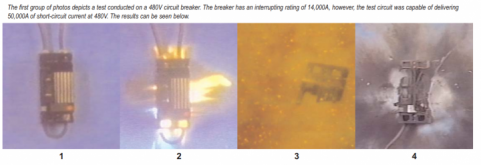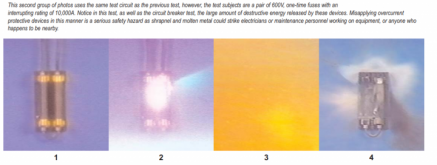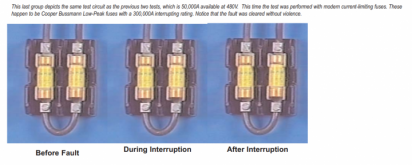Hedges
I See Electromagnetic Fields!
- Joined
- Mar 28, 2020
- Messages
- 21,846
And one other question I forgot to ask. Where do I recycle the damaged cell 14 ? I assume my local auto parts store that takes FLA's won't take it?
It still has as charge.
Time for a You-Tube video!
Not wanting to give away valuable old LA car batteries, I did a google search, found that some auto stores pay for them.
Winchester Auto doesn't, but O'Reilly's pays $10 for car batteries, $5 for motorcycle.
Glad the max theoretical draw on my 24v system is only 86a and have a 100 amp fuse. Most of the time the draw is much less. Those photos are scary.
How much current do you think the max they can produce into a short would be?
My math was 3.7V/0.00017ohms = 21,764 amps
So Class T fuse seems good. For a single string of lithium batteries.
Yes there was a fuse in place that I had on my old FLA pack a ANN-400 fuse which did not blow - have since learnt I should have had a much lower fuse like a ANN-250.
Yikes! ANN-400 is rated 2.7 kA interrupting!
I suggest something like class T that is rated to interrupt 20 kA. Some fuses are rated to 50 kA.
I've started to wonder what the fault current carrying capability of your busbars (and bolted connections) actually is.
Of course they can't carry 20,000 amps continuously. But can they carry it long enough for a fuse to blow? Or are they unable to, and that was the actual problem here? (Safety switches can carry 200,000A fault current)
What if all your busbar connections were done right, it's just that at 20,000 amps I^R this one happened to enter thermal runaway first.
16 cells x 0.00017 ohms (+ undetermined wire and wrench resistance) = 0.0027 ohms.
48V/0.0027 = 17,647A
Matched impedance occurs when one bad contact rises to 0.0027 ohms, a point where power dumped into the contact is maximum.
48V/(0.0027 + 0.0027 ohms) = 8824A
48V x 8824A = 424,000W
424,000W x 0.001 second = 424 joules deposited in 1 millisecond.
That's about the muzzle energy of a 9mm bullet. Enough to blow apart that bit of aluminum. (Although a considerable amount goes into heating that metal, so probably more than 1 millisecond melting it, and a sudden impulse as resistance increases.)
Last edited:





